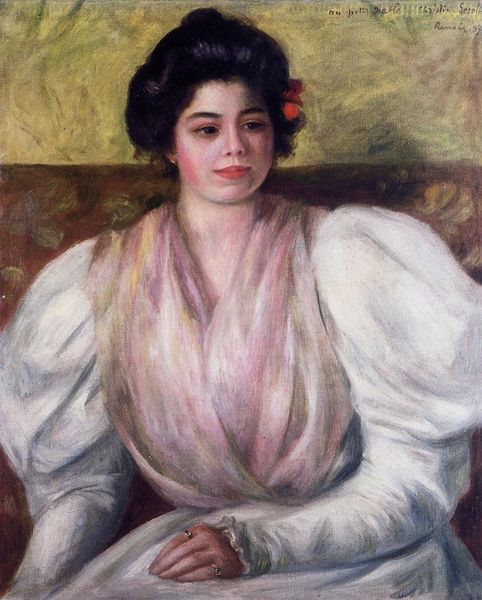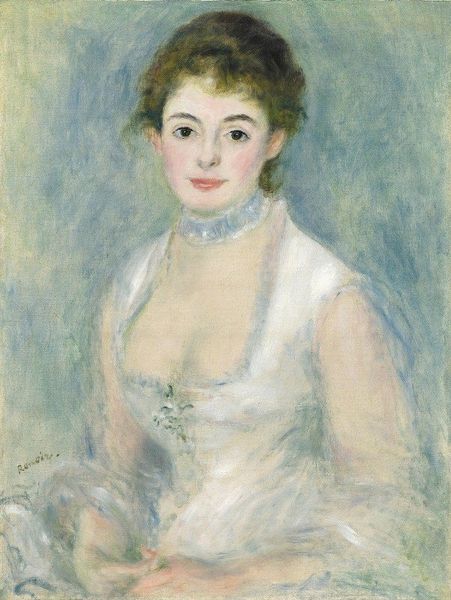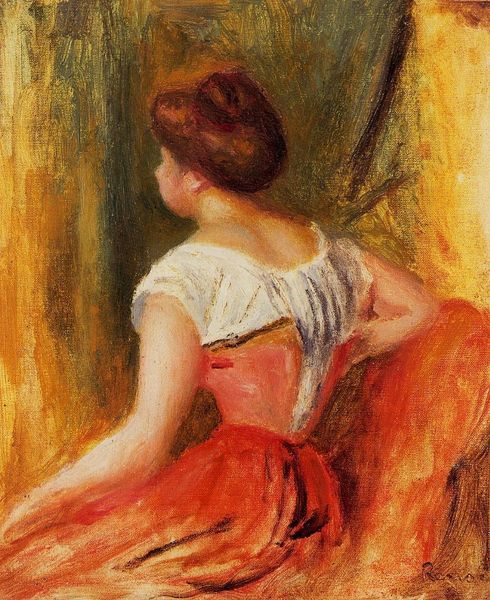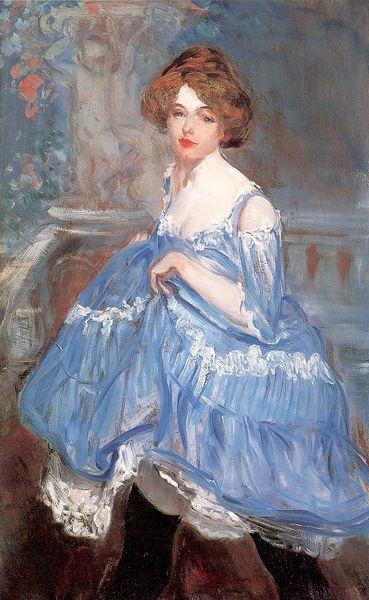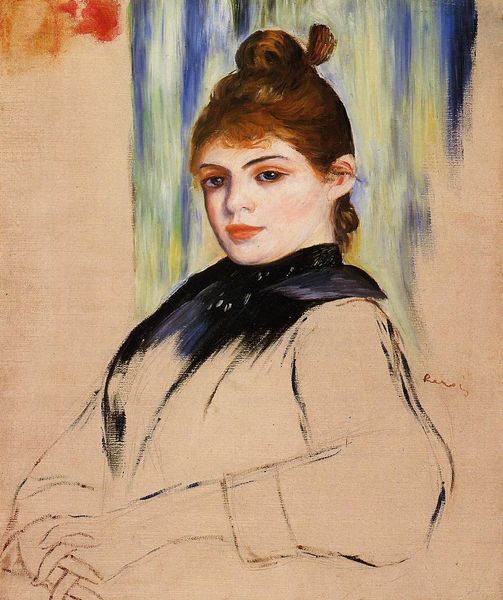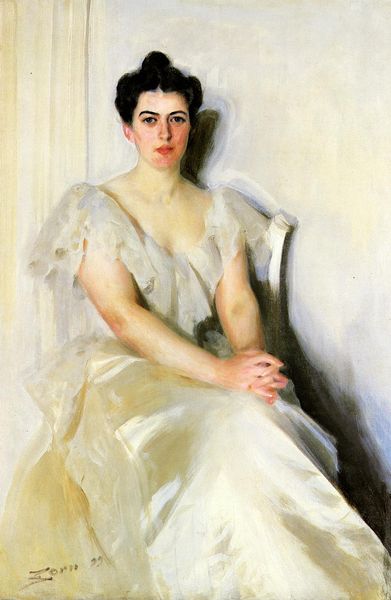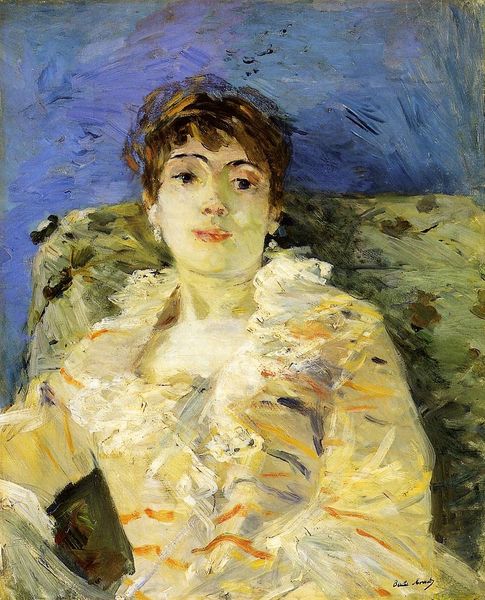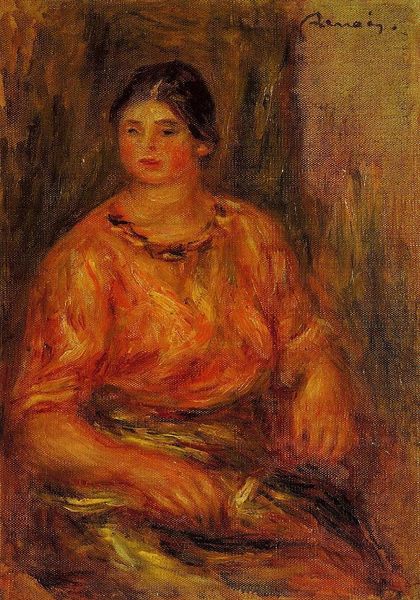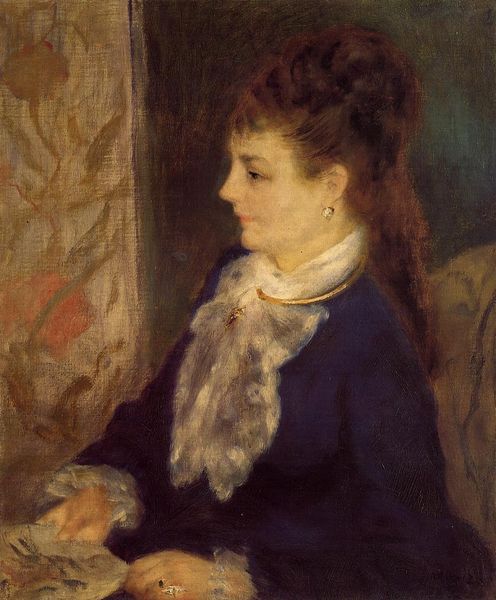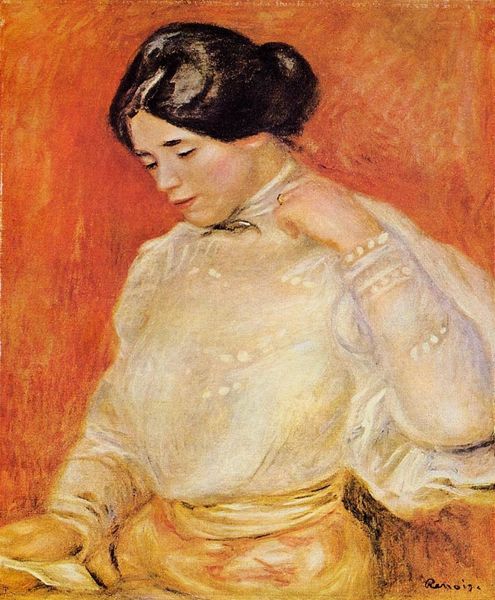
plein-air, oil-paint
#
portrait
#
impressionism
#
plein-air
#
oil-paint
#
oil painting
#
portrait drawing
#
portrait art
Copyright: Public domain
Curator: Look at this—"Seated Young Woman," an oil painting by Pierre-Auguste Renoir, dating back to 1890. Editor: My first impression is of serene domesticity, perhaps a portrayal of leisure in late 19th-century France. The soft brushstrokes evoke a palpable warmth and light. Curator: Absolutely. Renoir, heavily associated with the Impressionist movement, was working largely en plein air around this time. This portrait exemplifies that stylistic tendency, softening forms and playing with how light shapes our perception. The materiality itself contributes, doesn’t it? Editor: Precisely. I'm intrigued by the societal position of women reflected. We must also interrogate if this captures an authentic portrayal or merely serves male gaze expectations that were dominant during Renoir’s era. The almost ethereal rendering hints at an imposed standard, possibly diminishing individuality. Curator: That is something that can't be ignored. I also can't ignore the subtle class dynamics. There is an assertion to the status of Renoir's sitters during the Belle Époque through leisurely and soft presentation. Were paintings like this used to signal privilege and affluence? How might Renoir’s choice of models reflect his societal perspectives? Editor: Certainly, there's the whole question of performativity of identity and its connection to gender that runs parallel here. Who was she in society, and how was she performing her social and gender role for the portrait? Also how has she understood gender norms, internalized through family expectations. Curator: Indeed. Understanding these factors gives us access to an entirely different interpretative frame, opening a dialog about representation, identity, and societal dynamics during Renoir's time. Editor: This conversation is essential because it moves us from a passive appreciation of artistic flair to a deeper engagement with the narrative forces that sculpt our perceptions. It encourages us to reconsider who gets remembered, who gets overlooked and who holds agency when artwork is viewed. Curator: Thinking of those wider power dynamics, our journey from aesthetics to scrutiny makes me see not just art history, but social history reflected here. Editor: Yes. These reflections underline art’s unique role. It helps unearth profound conversations regarding the portrayal of identity that resonate even in contemporary spaces.
Comments
No comments
Be the first to comment and join the conversation on the ultimate creative platform.
